The rapid development of a 3D model has been a goal in MMG’s exploration programs to speed up decision making. The ease and speed at which a geological model can be built has far-reaching implications, as greater workload can be directed at formulating and testing hypotheses, generating meaningful targeting criteria for success.
Increasing pressure throughout mining to produce results using fewer resources translates to less time generating accurate and meaningful models, easily leading to a lack of detail in a depositional model. Where consultants are used for explicit modelling, a culture of external expertise is fostered, where very few in-house geologists study the resulting model in any detail. Using an intuitive implicit geological modelling package, such as Leapfrog, has allowed MMG to expand modelling expertise, with many exploration geologists taking on their own projects and adding value with relatively little time investment.
Using Leapfrog has resulted in an increase in the speed of modelling by an order of magnitude. The generation of simple objects has never been easier or more accessible. Directly using raw data, previously proven tedious, is now streamlined to the point of being transformational for exploration projects.
3D modelling is still in its infancy at MMG Exploration. The resource department uses explicit methods to maintain a standard, while Exploration has started modelling some solid volumes implicitly, the real value has been in the use of Leapfrog Geo and Mining earlier in the process. Ideas are easily drawn from the modelling before it is complete.
We are developing workflows that promote positive feedback loops in implicit
modelling and geological understanding, which is moving us towards our vision of ‘Every geologist using 3D every day’.
The value of fast, intuitive data visualisation and validation
Simple 3D data visualisation makes complex trends instantly recognisable (Figure 1). Many explicit modelling environments require significant training and data manipulation. Leapfrog Geo’s interfaces allow large and complex datasets to be inspected and interpreted using intuitive, fast, and easy-to-learn tools. More geologists gain the confidence to use the 3D environment and share meaningful interpretation.
Many 3D environments require raw data to be validated manually or with only partial automation within a database or spreadsheet, applying Boolean rules. This cannot guarantee error-free data sets and can be days of work. Common issues include drill hole collars floating in mid-air (Figure 2), subtle survey errors, and irregularity in assay values that can be missed in a normal rule-based validation as thresholds are often not representative of all project situations.
Leapfrog validates within the 3D environment, allowing issues to be easily detected and fixed visually. Geologists have a greater sense of data ownership, meaning better collection practices, more confidence, improved buy-in and involvement.
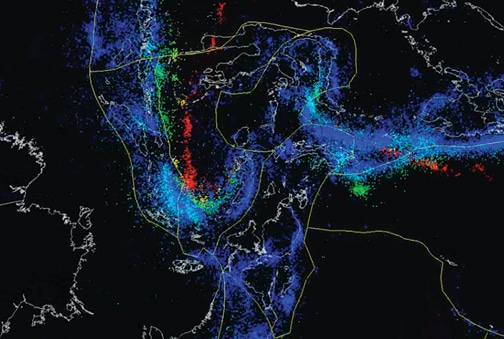
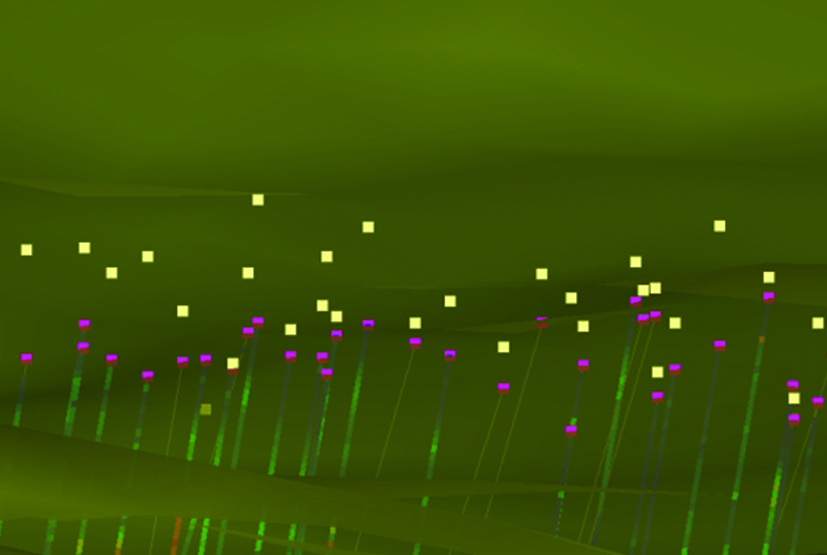
Interpretation directly within the modelling environment
Leapfrog Geo’s speed has allowed geologists at MMG to conduct sectional interpretation with greater accuracy. While ‘pencil and paper’ still provide a certain freedom, the ability to flick between variables, downhole logging fields and geochemical calculations directly from ioGAS has been an incentive to conduct2D and 3D interpretation within the 3D view. Implicit modelling comes to the fore with the ability to instantly propagate onto the area of interest, and while useful for regularly spaced and oriented interpretation, this becomes an essential tool if using perpendicular, oblique, or inclined sections. The task has become iterative, resulting in a far more robust interpretation than otherwise.
Speed of modelling solid volumes
In many situations, the implicit approach has proved far more efficient. A good case study is that of a stratiform deposit required to maintain a minimum unit thickness while honouring all available intersection points. Initial explicit modelling took four weeks manually adjusting surfaces to align with requirements (unsuccessfully). Leapfrog Geo’s stratigraphic sequence object type was released at this time, and the model was redone in less than a day (Figure 3) and further refined due to errant assays and incorrect drill hole logging that could not be quantified or readily detected explicitly.
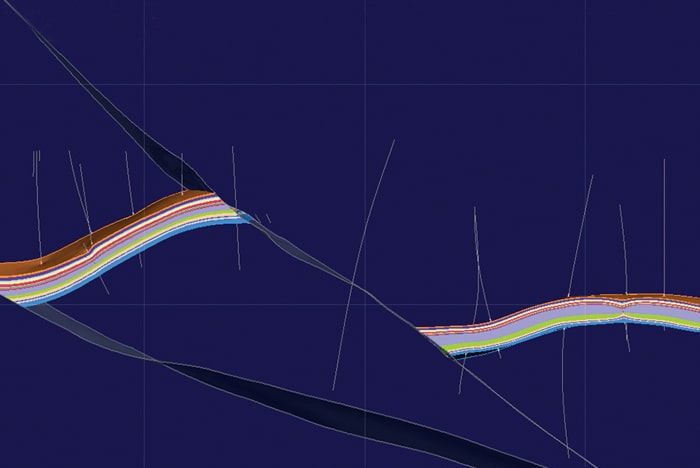
Radial basis functions: mapping the quick wins
RBF grade interpolants have become a staple of MMG’s exploration processes. Models can now be used at the initial investigation phase, rather than the traditional approach of using them towards the end after most interpretation had been completed.
Generating new ideas
For a new advanced project, an initial geometrical study of the distribution of grade is undertaken with no bias (Figure 4), allowing the RBF interpolant to simply model the strongest natural trends. These results offer completely new ideas and hypotheses on ore grade control can be formulated immediately. Successive refinement using observed trends as controls, form an iterative process where controlling structures are retained and data biases recognised and removed (Figure 5).
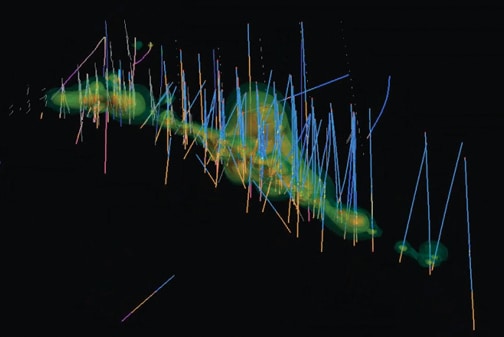
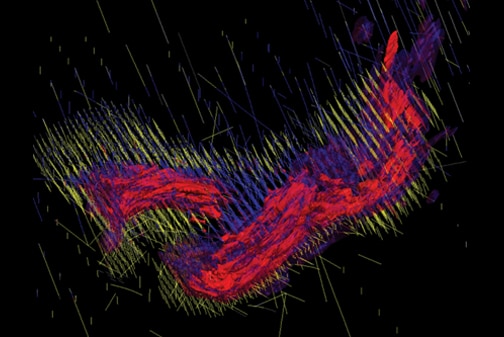
Figure 5: Surfacing with a volume points function (dynamically converting a subset of text-based logging into a cloud of distance-based values) is an extremely fast method of understanding the distribution and geometry of logged geology. This method saves an exorbitant amount of time compared to purely explicit methods. RBF interpolants provide an unbiased view of geometry providing further insight absent in mapping or logging.
Communication
Communication implications at this stage are also major, with sometimes only a few minutes work resulting in a product that can be shared amongst the group, with the majority of the overarching geometry clearly visible.
Driving decisions
We use Leapfrog to effectively understand primary properties, possibly driving a go/no- go decision, or as a catalyst to drive further targeted work. Many deposits require review in a short timeframe so gaining this information and being able to compare our own first pass interpretation has proven invaluable.
When more than one commodity or element is required to understand or delineate the deposit, using the same set of controls gives an opportunity to pick multiple generations of mineralisation or alteration.
MMG is bringing structural geology back from being a specialism to making it mainstream. Where geometrical relationships are built using overprinting rules and anisotropic trends (Figure 5), validating them requires further fieldwork. The 3D geological model becomes part of an iterative process that undergoes rigorous testing. With the ability to easily add new data, implicit models become dynamic, generated to answer scientific questions (Figure 6).
Implicit interpolation of structural surfaces is an essential part of MMG’s workflow (Figure 7), where structural measurement data are propagated throughout a defined space, and form surfaces are generated at defined intervals. This enables a quick interpretation of regional geometry where there is little or no sub-surface data, where such critical elements as depth of prospective horizons can be extracted. Formline mapping in 2D is an underutilised (and under acquired) dataset that provides the most significant information about geometry, the ability to instantly generate the equivalent surfaces in 3D has encouraged more efficient inspection. For stratiform deposits, a structural form surface is the ideal input for a heterogeneous bias.
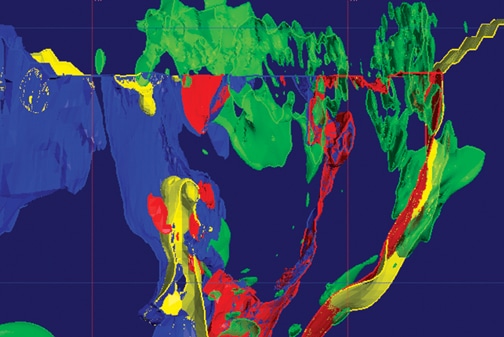
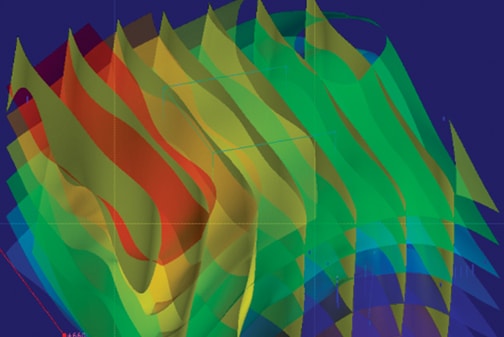
Spatial geochemistry
At MMG the ioGAS link has made Geochemistry far more accessible to other geologists encouraging them to add value to their study. Leapfrog users find that the ability to answer geochemical questions in real-time a good reason to begin using ioGAS in earnest, while Geochemists and ioGAS users have effectively used Leapfrog to add more detailed spatiality to their work (Figure 8), allowing a comparison with geophysical datasets and other modelled objects.
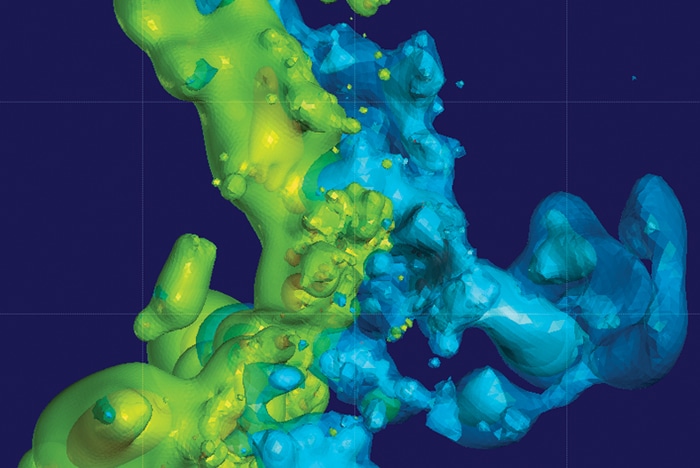
Rapid implicit processes lead to better decisions
At MMG, working with an implicit modelling package that combines an easy-to-use and easy-to-learn interface, a rapid modelling engine, partnerships with leading software and intuitive modelling methods have not only increased efficiency but have caused an expansion of skillsets.
Structural geology, geochemistry, geophysics, and mineralisation characteristics are increasingly more accessible. The ability to experiment, combine, and interpret quickly allows far more time for us to be geologists, mapping the distribution of complex relationships, testing hypotheses, focussing effort on increasing critical ore-body knowledge elements, and ultimately drilling the best targets.
Anthony Reed
3d Structural & Information Geologist
MMG





